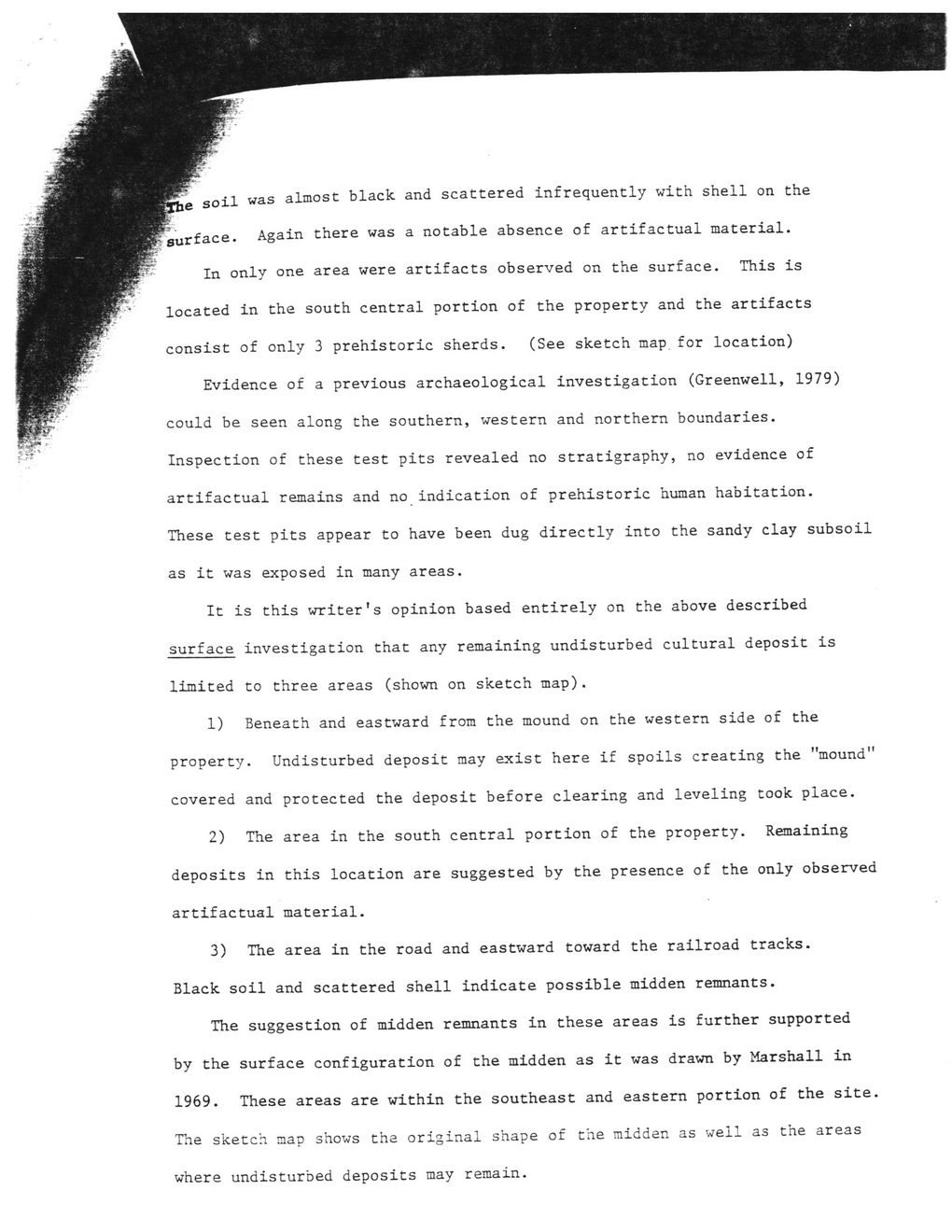This text was obtained via automated optical character recognition.
It has not been edited and may therefore contain several errors.
A soil was almost black and scattered infrequently with shell on the surface. Again there was a notable absence of artifactual material. In only one area were artifacts observed on the surface. This is located in the south central portion of the property and the artifacts consist of only 3 prehistoric sherds. (See sketch map for location) Evidence of a previous archaeological investigation (Greenwell, 1979) could be seen along the southern, western and northern boundaries. Inspection of these test pits revealed no stratigraphy, no evidence of artifactual remains and no indication of prehistoric human habitation. These test pits appear to have been dug directly into the sandy clay subsoil as it was exposed in many areas. It is this writer's opinion based entirely on the above described surface investigation that any remaining undisturbed cultural deposit is limited to three areas (shown on sketch map). 1) Beneath and eastward from the mound on the western side of the property. Undisturbed deposit may exist here if spoils creating the "mound" covered and protected the deposit before clearing and leveling took place. 2) The area in the south central portion of the property. Remaining deposits in this location are suggested by the presence of the only observed artifactual material. 3) The area in the road and eastward toward the railroad tracks. Black soil and scattered shell indicate possible midden remnants. The suggestion of midden remnants in these areas is further supported by the surface configuration of the midden as it was drawn by Marshall in 1969. These areas are within the southeast and eastern portion of the site. The sketch map shows the original shape of the midden as well as the areas where undisturbed deposits may remain.

Claiborne Historical Site Guerin-Giardino-(068)